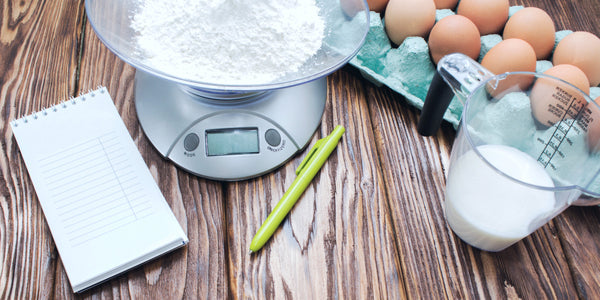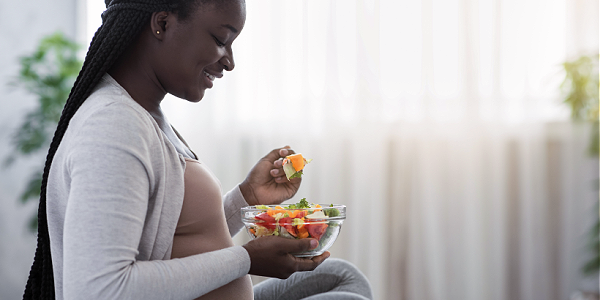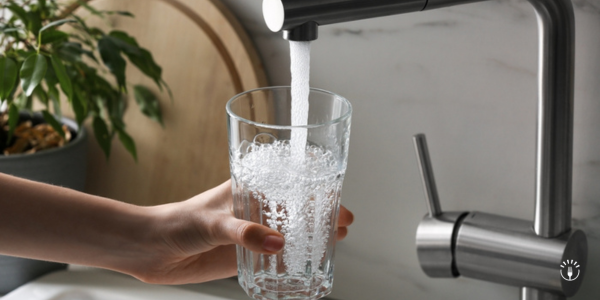
Using a food scale can potentially make the cooking and cleaning process easier and more consistent. And not to mention, the saved time from kitchen cleanup!
However, do you really need a food scale to make recipes correctly and follow a meal plan to a T? Learn the benefits from using food scales to measure, and what to avoid wasting time on.
What Are Food Scales?
Food scales are meant to provide a way to produce recipes or food quantities that come out the same every time. Measuring ingredients by volume using cups, tablespoons, teaspoons, etc. can have variance in how much weight of an ingredient is actually used.
If using this method to add ingredients, it may cause differences in the end result of baking or cooking recipes.
Difference Between Digital & Non-Digital Food Scales
A digital food scale is a device that is either battery or electrically powered that home and professional cooks use to weigh ingredients. It is small enough to simply put a bowl or other container on the scale, zero it, and add ingredients to the bowl to track weight measurements.
A non-digital or spring scale can also be used. The difference is a container is placed on the base which sits on top of a spring scale. Add ingredients until the scale reads the desired amount of food. Spring scales are also fairly small, but they take more space vertically.
Digital Scale Benefits
There are many potential benefits of using a digital scale. These include:
• Exact portion sizes
• Accuracy with ingredient amounts
• Consistent baking/cooking results
• Relatively inexpensive
• Easy storage
If these aspects are personally important when cooking and eating, having a digital scale can be beneficial.
Accuracy in Measuring
Especially with baking, exact precise measurements can affect the end result of your recipe. One major benefit of using a digital scale is ensuring accuracy with your ingredient amounts.
According to Taste of Home, measuring out a cup of flour should weigh 4.25 ounces. However, when flour is measured into a cup the weight can vary up to an ounce depending how it is measured.
Consistency in Recipes
Having accuracy in ingredients means your recipe results will be consistent. When you measure ingredients by volume, there can be variance in actual ingredient weight which may impact the result of your recipe.
If you are having inconsistent results with some recipes, it may be beneficial to use a digital scale for measuring.
Easier Clean-Up
Using a digital scale means you can easily add ingredients directly into a larger bowl or container without using measuring cups or spoons. This makes for an easier clean up after cooking because you have fewer dishes to clean and spend time doing other things!
Managing Portions
Besides measuring ingredients, another main use for food scales is tighter portion control and monitoring calorie intake. Whether for weight loss or just healthy eating in general, weighing food can easily give accurate portion sizes of cooked or uncooked food for meals and snacks.
A kitchen scale is also great to measure calorie-dense foods such as peanut butter. Even if thinking a small amount is spooned from the jar, the serving size could be hundreds of calories. If losing weight is a goal, knowing the exact number of calories can be the difference between success and frustration.
Most digital scales also allow users to easily change units from grams to ounces or other measurement units. So if trying to eat 4 ounces of protein on a meal plan, simply weigh this out on a digital kitchen scale and know the exact portion size.
Low Cost & Easy Storage
Digital scales are relatively inexpensive and often around $20 or less. They are also easy to store, as they do not take up much counter or storage space in comparison with other kitchen gadgets.
Is There a Downside to Using a Scale?
There are many potential advantages of using a scale with relatively low risk. However, keep these considerations in mind before purchasing using a scale.
It is important to know how to use a digital scale before adding the ingredients to a recipe. Make sure it is on the right measurement unit setting i.e. not having it in grams when you really need ounces for a recipe.
Also, tare or zero the scale after placing the bowl on and in between adding ingredients or weighing food portions. Without this step, ingredient amounts may be off and the recipe might need to be started over!
If typically using recipes without weight measurements, some scales will convert the measurements. Otherwise, keep in mind you may need to use a measurement conversion table to get accurate weights if not listed.
Downsides of Spring Scales
In general, using a digital scale at home is considered advantageous over a spring scale. Using a spring scale may be advantageous in a rare instance if you want a scale that is not dependent on batteries or electricity.
There are a few potential downsides to using a spring scale over a digital scale. Spring scales are bulkier than a digital scale and are considered less accurate compared to digital scales. Spring scales also typically just have one unit of measurement on their scale.
The Bottom Line
Overall, using a kitchen scale can be valuable for one who wants consistency in their baking and precision when following a diet plan. Their use can be the difference between a dense or soft-baked good, as well as a 100-calorie peanut butter serving versus 500 calories.
Digital scale benefits tend to outweigh any disadvantages when used correctly. And given their relatively inexpensive price point, they might be worthy of any next-to-none drawer space!







